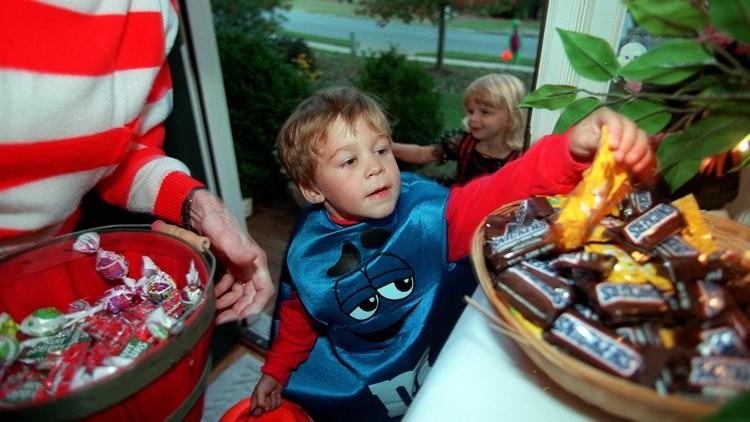Adults are not handing your kids drugs on Halloween—but they are hitting them with cars
Children and adults across the United States are excitedly preparing for Halloween 2019. Despite the festive day falling on a school night—which it has since 2016—trick-or-treating and partying are still in store for all states, barring a landfalling hurricane or severe thunderstorm outbreak.
On Oct. 31, 2018, tornadoes were reported across parts of Texas, Louisiana and Mississippi, killing at least two people, downing many trees, and causing scattered power outages. Residents of the Northeast were even less lucky in 2012, when Category 3 Hurricane Sandy roared ashore in New Jersey and New York City on Oct. 29 of that year. Over 50 people perished in the state of New York alone with most of the deaths in the Big Apple. The state also suffered damages of roughly $19 billion. Halloween was essentially cancelled in that region until 2013.
But severe weather is extremely rare on Halloween. Other dangers, like pedophiles luring young trick-or-treaters and real-life monsters poisoning children with drug-laced candy, are worth worrying about far more. Or are they?
Almost all states impose special rules for sex offenders on Halloween. Many jurisdictions require such offenders who are on probation or parole to remain at home, turn porch lights off, post warning signs near the front of their houses or even report to designated locations.
These policies seem completely logical, until one learns from Bureau of Justice Statistics (BJS) that sex offenders have lower recidivism rates than other types of criminals. A 2019 report analyzing nine-year recidivism rates of state prisoners who were released in 2005 showed that roughly two in three sexual offenders were rearrested for any offense within nine years, but only 7.7 percent of people in that same category found themselves in custody for another sex crime.
Additionally, there is no clear evidence of increased sexual assaults and rapes involving children on Halloween. Clearly, the Halloween restrictions that sex offenders face—as well as the other ones they face all year, such as staying away from schools and parks—are indicative of America’s retributive culture towards those who break the law.
This also explains why anyone with a criminal record, even very minor ones, are often subject to rejection from jobs, post-secondary institutions, loans and housing. Zero-tolerance discipline policies in the nation’s public schools, which causes students of color to face harsher punishments as well as higher chances of dropping out of school and entering the juvenile justice system, are also indicative of this trend.
Not even some victims of crime support this punitive system. The Alliance for Safety and Justice learned in a 2016 survey that “survivors of violent crime—including victims of the most serious crimes such as rape or murder of a family member—widely support reducing incarceration to invest in prevention and rehabilitation and strongly believe that prison does more harm than good.”
But sex offenders are by no means the only human monsters who are deemed a risk to children. Fears of other strangers, regardless of their criminal history, lacing their candy with drugs and poison also remain high.
The good news, though, is that the story of tainted Halloween candy killing innocent kids is largely a hoax. Only a handful of incidents have ever come close to resembling this urban legend, and none of them have occurred within the past thirty-five years.
For those looking to improve safety during the spooky holiday, data says to reduce traffic fatalities.
A team led by Dr. John Staples conducted a study in 2018 based on data from 1975 to 2017 concluded that pedestrian deaths surged on Halloween than on the rest of the days in the two-week period surrounding Oct. 31. The ages of over half the casualties range from four to eight.
“On Halloween and throughout the year, most childhood pedestrian deaths occur within residential neighborhoods. Such events highlight deficiencies of the built environment (eg, lack of sidewalks, unsafe street crossings), shortcomings in public policy (eg, insufficient space for play), and failures in traffic control (eg, excessive speed),” the report read.
To make Halloween safer for American children, policies and concerns of both parents and legislators should focus on speeders instead of sex offenders and streets rather than sweets.



![A map of emergency callboxes on campus. (UNCW) [hyperlink: https://uncw.maps.arcgis.com/apps/webappviewer/index.html?id=579a0e90030c4864a41c70fbe06338d9 ]](https://theseahawk.org/wp-content/uploads/2023/12/IMG_6388-600x277.png)



